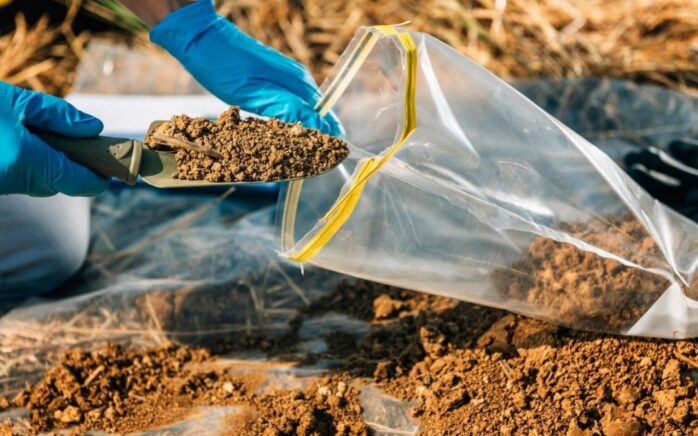
Your lawn is a beautiful part of your property and an important component of your home’s curb appeal. It’s important to keep your lawn healthy and green to keep it looking beautiful. One of the keys to maintaining a healthy lawn is by understanding the soil it grows in. This is where soil testing comes in.
Understanding Soil Composition and Nutrient Availability
Before discussing the importance of soil testing, it’s essential to understand the composition of the ground and the nutrients that it contains. Soil is composed of a mixture of minerals, organic matter, water, and air. The mineral component of dirt includes sand, silt, and clay, which all have different properties that impact dirt quality. This is why it is important to consult with Sarasota landscape companies for expert advice on soil composition and quality.
The nutrients in the soil that are most important for lawn health include nitrogen (N), phosphorus (P), and potassium (K). These are known as macronutrients and are required in large amounts by plants for proper growth and development. Other essential nutrients for plant growth include calcium (Ca), magnesium (Mg), and sulfur (S).
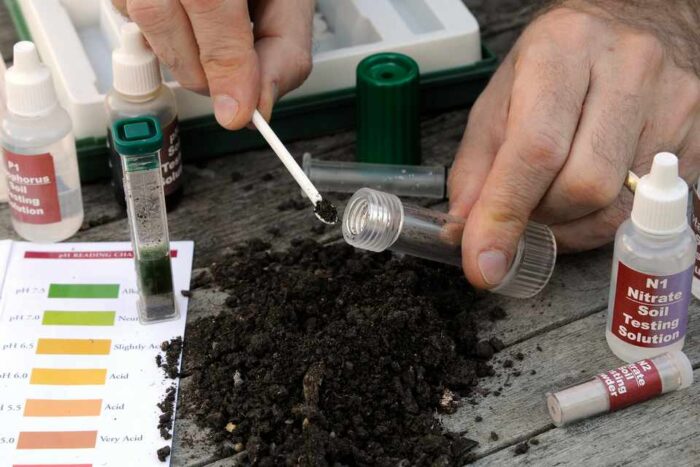
The Role of pH Levels in Lawn Health and Fertilization
The pH level of your hummus is another critical factor in lawn health and fertilization. The pH level refers to the acidity or alkalinity of your soil, and it can affect nutrient availability. Most lawns prefer a soil pH between 6.0 and 7.0, which is slightly acidic.
If the ground is too acidic or too alkaline, the nutrients become less available to the grass, leading to nutrient deficiencies and poor lawn health. For example, if the pH is too low, the grass may suffer from iron deficiency, which can lead to the yellowing of the leaves.
NPK and Other Essential Nutrients for Lawn Growth
As mentioned earlier, nitrogen (N), phosphorus (P), and potassium (K) are essential nutrients for lawn growth. Nitrogen is necessary for green leafy growth, while phosphorus helps with root development and flower and seed production. Potassium promotes overall plant health and disease resistance.
Other essential nutrients for lawn growth include calcium (Ca), magnesium (Mg), and sulfur (S). Calcium is necessary for strong cell walls, while magnesium is required for chlorophyll production. Sulfur is necessary for the synthesis of certain amino acids and proteins.
Conducting a Soil Test: Step-by-Step Guide
To conduct a test, you’ll need to take a ground sample and send it to a laboratory for analysis. Here’s a step-by-step guide:
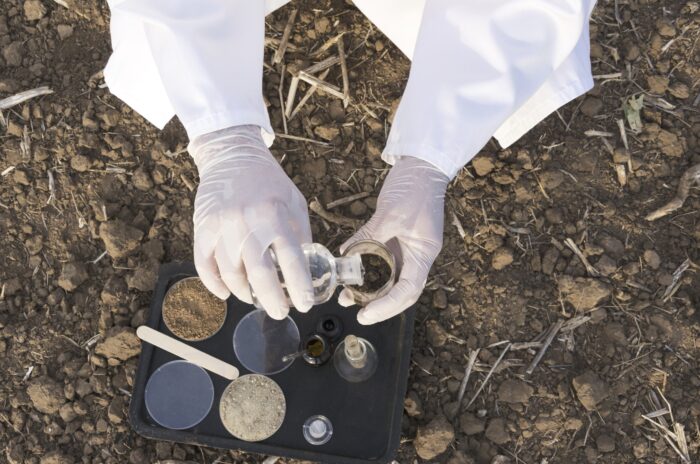
Step 1: Determine the Sampling Area
Ideally, you should take samples from several different areas of your lawn, as the nutrient composition of your ground can vary from one area to another. You should also avoid sampling areas that are very different from the rest of your lawn, such as areas near trees or areas that are heavily shaded.
Step 2: Take the Sample
Once you’ve determined the sampling area, it’s time to take a soil sample. You can use a garden trowel or shovel to collect dirt from a depth of 4 to 6 inches. Be sure to remove any debris, such as rocks or plant material, from the sample.
Step 3: Mix the Sample
After you’ve collected the sample, you should mix it thoroughly to ensure that the sample is representative of the entire sampling area. You can use a clean bucket or plastic bag to mix the sample. Be sure to remove any large clumps of dirt and break up any soil that is compacted.
Step 4: Dry the Sample
After mixing the sample, you should spread it out on a clean surface, such as a newspaper or a baking sheet, and allow it to dry completely. This can take several days, depending on the humidity and temperature.
Step 5: Send the Sample to a Laboratory
Once the sample is dry, you can send it to a laboratory for analysis. Most agricultural extension offices and garden centers offer testing services. Be sure to follow the instructions provided by the laboratory for collecting and submitting the soil sample.
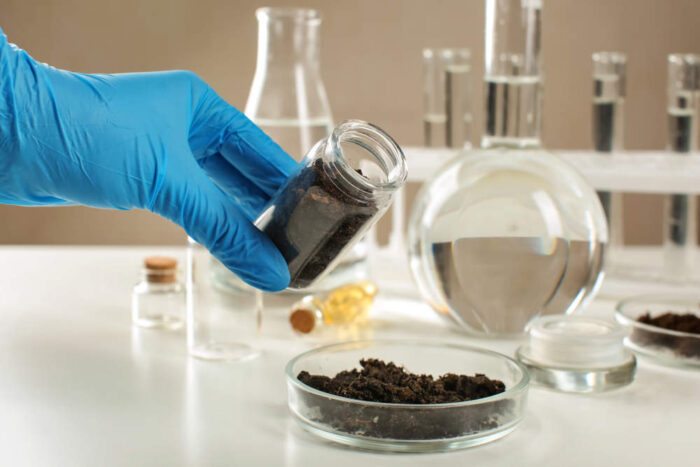
Interpreting Test Results: What Do They Mean?
After the laboratory has analyzed your sample, they will provide you with a report that includes information about the levels of nutrients in your soil, the pH level, and the level of organic matter. The report may also provide recommendations for fertilizer and soil amendments based on the results of the test.
When interpreting results, it’s important to pay attention to the nutrient levels in your soil. If your dirt is deficient in a particular nutrient, you may need to apply a fertilizer or soil amendment that contains that nutrient. If your soil pH is too low or too high, you may need to adjust it with lime or sulfur.
Choosing the Right Fertilizer Based on Test Results
One of the main benefits of conducting a soil test is that it allows you to choose the right fertilizer for your lawn based on the nutrient levels in your soil. If your ground is deficient in nitrogen, for example, you may need to apply a fertilizer that is high in nitrogen.
When choosing a fertilizer, it’s important to consider the nutrient composition of the fertilizer and the rate at which it should be applied. Applying too much fertilizer can lead to nutrient runoff, which can be harmful to the environment. Be sure to follow the instructions provided by the fertilizer manufacturer and the soil test report.
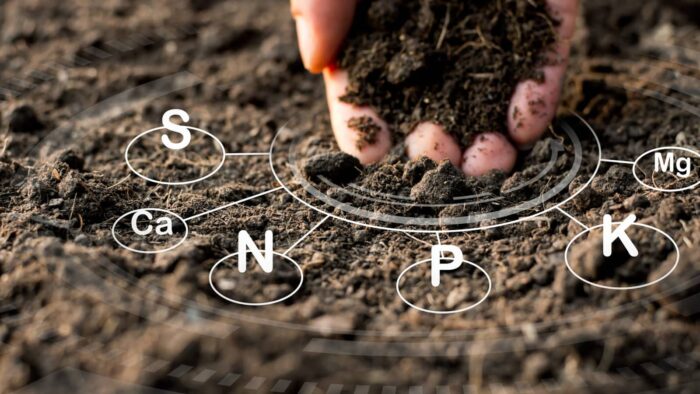
Soil Amendments and Their Role in Lawn Health
Soil amendments are products that are added to the ground to improve their quality and nutrient composition. Common amendments include lime, sulfur, compost, and manure.
Lime is used to raise the pH level of the soil, while sulfur is used to lower the pH level. Compost and manure are used to add organic matter to the dirt, which improves structure and nutrient availability.
Maintaining Healthy Lawn: Tips and Best Practices
In addition to conducting a soil test and applying the right fertilizer and amendments, there are several other things you can do to maintain healthy soil and promote lawn growth. These include:
- Regularly mowing your lawn to promote healthy growth.
- Watering your lawn deeply and infrequently to encourage deep root growth.
- Removing thatch buildup from your lawn can prevent water and nutrients from reaching the roots.
- Aeration of the ground reduces compaction and allows for better water and air movement.
- Properly managing weeds, pests, and diseases that can damage your lawn.
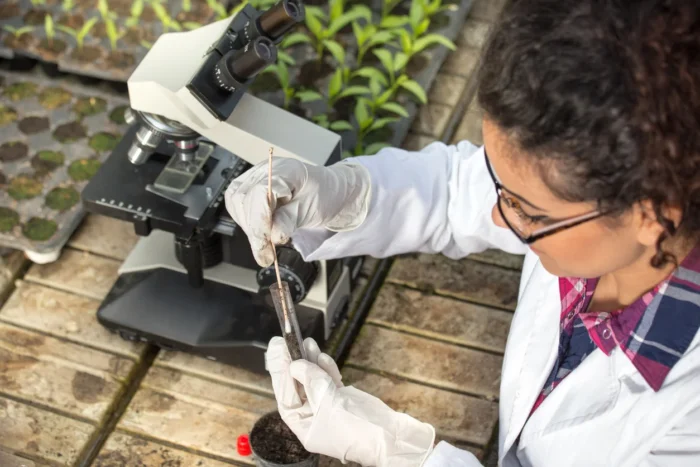
Conclusion
Soil testing is an essential tool for any lawn owner who wants to have a healthy and thriving lawn. It can provide invaluable information about the nutrient levels in your lawn and help you determine what type of fertilizer you should use, how much to apply, and when it’s best to do so. With regular monitoring of your soil using these tests, you can ensure that your lawn remains healthy over time.





